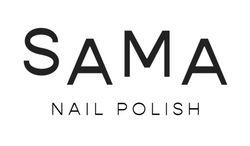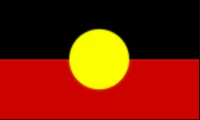We get it. Gel polish is convenient. It dries instantly, so there's no down time twiddling your thumbs waiting for polish to dry. It doesn't chip as easily either, so you don't have to redo your nails all the time.
Sorry to break it to you sis, but it's time to face the facts. Despite the convenient allure of gel nail polish, there are a few hard truths you need to be aware of.
The Dark Side of Gel Nail Polish
UV Exposure and Skin Health
One of the primary concerns associated with gel nail polish is the ultraviolet (UV) light exposure during the curing process.
The Skin Cancer Foundation has suggested that repeated exposure to UV nail lamps may have the potential to increase skin cancer risk, as well as accelerate skin aging and unsightly sun spots.
In a case study reported by the JAMA Dermatology in 2009, two middle-aged women without a history of skin cancer developed non-melanoma skin cancers on their hands.
The common link was that both had used UV nail lamps (1). However, it's essential to note that more comprehensive research is required to fully understand the magnitude of this risk.
Nail Damage
Removing gel polish is no picnic. We've all been there.
Immersing your nails in strong acetone and scrapping off the gel is not fun.
This process can strip away layers of the natural nail, leading to weak, brittle, and damaged nails.
A peer-reviewed study in the Journal of Cosmetic Dermatology in 2012 found evidence of an association between gel manicures and nail weakness, brittleness, and thinning (2).
Exposure to Harmful Chemicals
The chemical composition of gel nail polishes raises additional health concerns. Some of these polishes contain the "toxic trio" - dibutyl phthalate (DBP), toluene, and formaldehyde.
According to the Environmental Working Group, these substances have been associated with problems like skin irritation, endocrine disruption, and in the case of formaldehyde, even cancer (3).
Even the American Academy of Dermatology recommends giving your gel nails a break and instead swap for a traditional nail polish.
Gel Nail Polish Hot Tips
We get it, one blog isn't going to change your whole nail polish repertoire. If you do keep using gel polish, here are some hot tips to prevent health concerns.
Give Your Nail A Break
Try to reduce gel manicures to only special occasions!
Apply Sunscreen / Sun Protection
We all know how important sunscreen is for your face. So let's do the same for our hands (and the rest of our bods).
Try to opt for a mineral sunscreen, also known as physical barrier sunscreen. If you're really invested in gel mani's, you may want a pair of UV-protective fingerless gloves.
The Safer Alternative: Natural Liquor Nail Polish
Natural liquor nail polish, your knight in shining, organic armour! These polishes swap harmful chemicals for nature's own ingredients.
Think beautiful plant-derived elements.
Not only are they kind to your nails, they also avoid the infamous "toxic trio" - dibutyl phthalate (DBP), toluene, and formaldehyde - notorious for their health risks.
Look for formulas with 10-free on their label (like our nail polish polishes at SAMA) to avoid all the big nasty chemicals found in traditional nail polish.
No UV Curing, No Problem
One of the biggest perks of natural liquor nail polish? There's no need for UV curing!
While they may not last as long as gels, they're far kinder to your nails and skin.
And when it's time for a new look, a gentle, regular (non acetone) nail polish remover is all you need.
Gel Nails Don't Slap.
In a nutshell, while gel nail polish offers durability and some longevity, it comes with a cost - potential damage to your nails and skin.
Natural liquor nail polish is a healthier, eco-friendlier alternative, providing beauty without compromising your health or the planet.
It's time to make a switch for the better, hottie. Your nails will thank you!
References:
MacFarlane DF, Alonso CA. Occurrence of Nonmelanoma Skin Cancers on the Hands After UV Nail Light Exposure.
JAMA Dermatology. 2009;145(4):447-449. Shenoy A. et al. Brittle nails. Journal of Cosmetic Dermatology. 2012;11: 231-240.
Environmental Working Group. EWG’s Guide to Healthy Cleaning. 2021.














